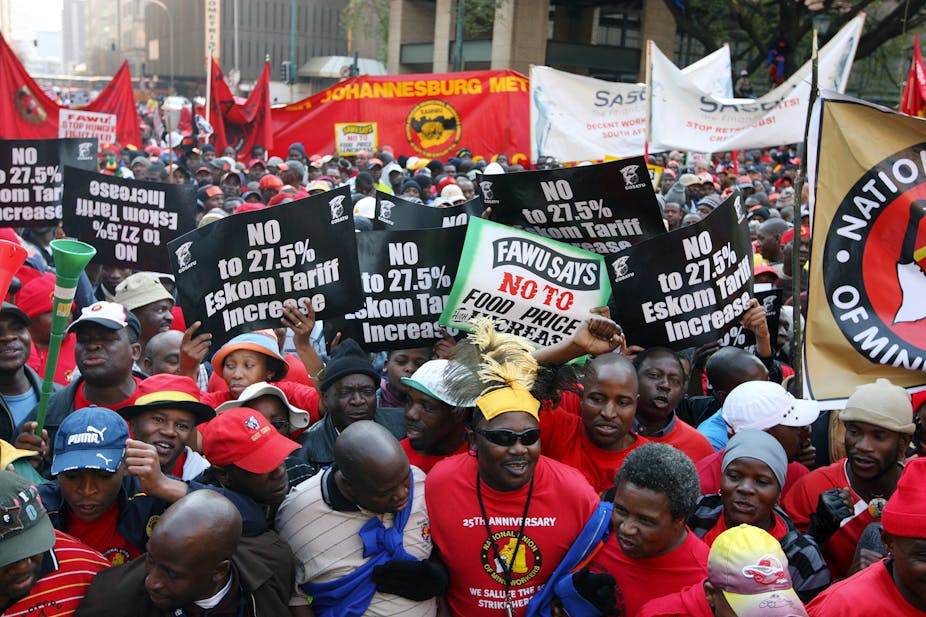The global growth in demand for food is outstripping supply and by the middle of the century there will be about a third more mouths on the planet to feed.
The world’s middle class is expected to rise by three billion over the next few decades, mostly in the Asia-Pacific region. As developing countries become richer, people eat more, and differently: meat and dairy consumption rises.
But yields of agricultural staples such as wheat and rice are already failing to keep pace with demand and greater meat consumption will mean even more food must be turned over to feed livestock. Livestock already consume 36% of the world’s calories produced. Added to this, the limited supply of productive agricultural land is being increasingly lost to development.
To this system already under pressure, is the additional burden of climate change. The latest report from the IPCC Working Group II, which examines the impact of climate change and means to adapt to it, highlights some of the risks we face trying to feed the world.
Food security at risk
Food security rests on four pillars: food availability (is enough produced?), access (can people afford it?), use (how is it prepared and consumed?) and stability (is food there at all times?) The first three reflect the way the system functions or fails, while the last reflects its resilience to shocks.
As systems are pushed to their limits, small shocks can become amplified. The food system, with its imbalance between demand and supply, is clearly one under pressure. In 2007-8, for example, weather-related supply problems led to rapid food price inflation, whose effects were felt around the world – not least in sparking civil unrest in many countries, including as a contributory factor in the Arab spring.
What the IPCC report has concluded is that over the coming decades the impact on crop yields, without taking steps to counter it, will be predominately negative. Climate change will, on average, reduce yields by about 2% per decade. This is consistent with the impact on crop yields observed over the last few decades.
The previous round of IPCC reports in 2007 (AR4) were fairly optimistic for agriculture at higher latitudes. The weight of academic studies indicates that that this optimism may be unwarranted. Given that a large proportion of the world’s calories are accounted for by a small number of staple commodity crops and the highest yields are in the higher latitudes, changing temperatures in these regions may have a significant impact on the world’s food supply.
The IPCC concludes that, without taking steps to counter the effects, climate change of 2°C or more would have a negative impact on agriculture. This is not an “alarmist” conclusion as some have claimed: the underlying data show that even at 1°C – for some situations, such as maize in temperate and tropical regions – the impact is noticeable.
Variability is key
But this average overall impact masks two important issues.
First, there is large variability between regions – the exact impact of climate change for any given location is difficult to predict with precision. For example, between 2030-2049, about 10% of projections predict improved yields of around 10%, while about 10% of projections indicate falling yields of more than 25%, mainly in the low latitudes.
Second, extreme weather has increased in frequency and magnitude over the last decade. Some of these, such as the 2010 heatwave in Russia and subsequent wheat crop failures, send clear signals suggesting an increasingly less stable and less predictable food supply. The IPCC’s projections suggest that yield variability will increase by between two to three times by the second half of the century, affecting the supply of food. Events like the Russian wheat failure are set to become more common.
A new green revolution?
The future is one where the food system faces increasing climate-induced pressure on supply in the face of growing demand, and also increasingly variable weather. The implications are only just starting to sink in, and managing both will be a much greater challenge than either alone.
The report’s conclusions are of concern. When demand is growing faster than supply, any break on increasing supply will push up food prices, affecting the poorest most. Across the world, the number of people who struggle to finance a healthy diet is growing: in the UK it is certainly a growing issue.
While changing the type of crop and when it is grown can help, the limits to these simple adaptations signpost the need for a large-scale agricultural transformation. This is needed to limit the overall damage from a changing climate, but it will help in taking advantage of new agricultural opportunities. These will be very important for some: for example, for the first time since Roman times Scotland has recently become a wine producer.
The global food system is increasingly more reliant on fewer crops than in the past. This is a double-edged sword: while food grown in one place can, via a global market, feed others if their weather has reduced production, at the same time an increased concentration of fewer crops poses the risk of putting all our eggs in one basket.
The implications of the IPCC’s results are that all four of the pillars of food security face mounting pressure. The effects of extreme weather especially has the potential to destabilise the food system, with the potential to undermine food security for many, and not just the world’s poorest. Managing the system to ensure greater resilience to shocks while maximising food production must now be an urgent policy aim.

